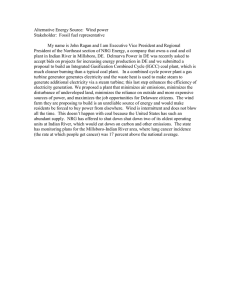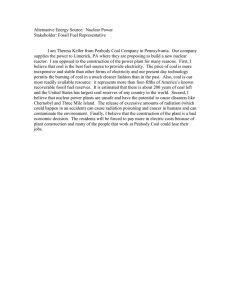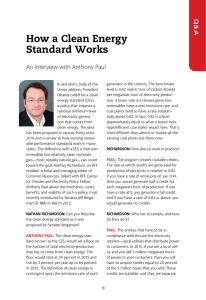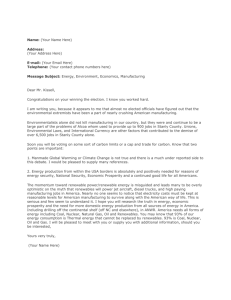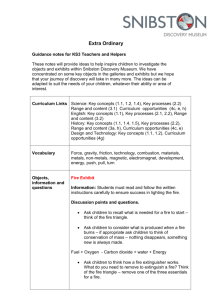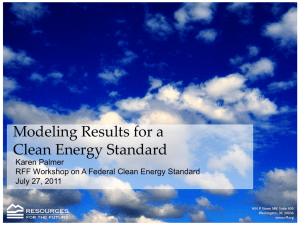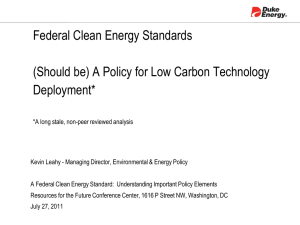The Future of Fuels: Toward the Next Decade of Energy
advertisement
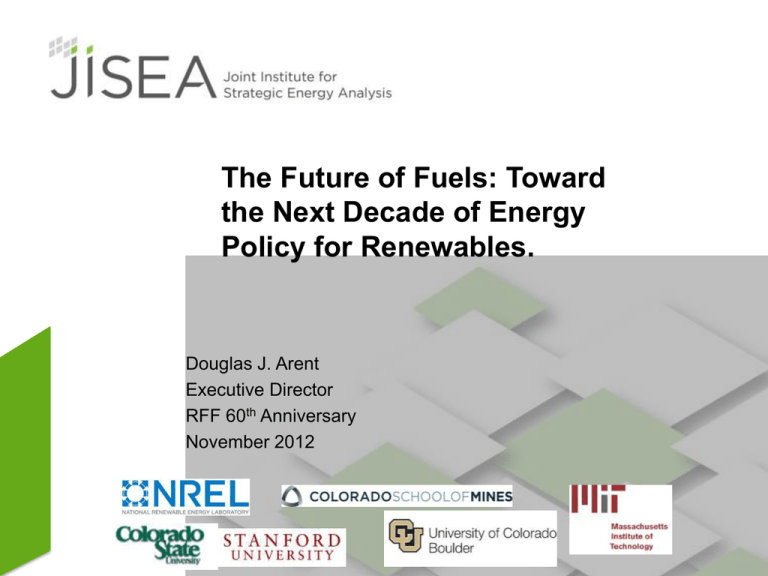
The Future of Fuels: Toward the Next Decade of Energy Policy for Renewables. Douglas J. Arent Executive Director RFF 60th Anniversary November 2012 1 Net Annual Capacity Additions GW World Outlook: Power Generation WEO, 2012 2 US Outlook: Natural gas, wind and other renewables account for the vast majority of capacity additions from 2010 to 2035 Capacity additions 2010 to 2035 2010 capacity Hydropower* 101 (10%) Other renewables 16 (2%) Hydropower* Nuclear 9 (4%) Coal 3 (1%) 11 (5%) Nuclear 101 (10%) Coal 313 (30%) 1,036 gigawatts Wind 39 (4%) Natural gas 350 (34%) End-use coal 6 (2%) Other renewables 34 (14%) Wind 30 (13%) End-use coal 4 (0.4%) Other fossil 111 (11%) Other fossil 1 (0.4%) 235 gigawatts Natural gas 142 (60%) * Includes pumped storage Source: EIA, Annual Energy Outlook 2012 3 Alternative Scenarios: Non-hydro renewable sources grow 3-4x, with economic growth, or with a price on CO2 non-hydropower renewable generation billion kilowatthours 2025 2035 Wind Biomass Solar Geothermal Coal Economic Gas Cost Growth Price Coal Economic Gas Cost Growth Price Municipal waste Source: EIA, Annual Energy Outlook 2012 4 Other Policy Options: Clean Electricity Standard 6,000 CES High-EUR 5,000 Annual Electricity Generation (TWh) Annual Electricity Generation (TWh) 5,000 6,000 CES High-EUR, No-CCS 4,000 3,000 2,000 1,000 CES Low-EUR Offshore Wind 5,000 Annual Electricity Generation (TWh) 6,000 4,000 3,000 2,000 1,000 Onshore Wind PV CSP 4,000 Other RE Hydropower NG-CCS 3,000 NG-CT NG-CC Oil/Gas Steam 2,000 Coal-CCS Coal-New Coal-Existing 1,000 Nuclear Demand 0 2010 • • • 2020 2030 2040 2050 0 2010 2020 2030 2040 2050 0 2010 2020 2030 2040 2050 A CES generally leads to greater NG power generation in the near-term followed by reliance on RE (and to a lesser degree, CCS and nuclear) in the long-term Under a CES, 2050 RE power generation is significant even with high EUR and CCS deployment: 38% wind, 9% solar, 7% hydro, 3% other RE New nuclear capacity expansion is more limited under cost assumptions used 5 Renewable Electricity Futures Study 100% Wind % of Total Generated Electricity 90% PV 80% 70% CSP 60% Hydropower 50% Geothermal 40% RE-ITI scenarios Biomass 30% 20% Natural Gas 10% Coal 0% 90% RE 80% RE 70% RE 60% RE 50% RE 40% RE 30% RE Baseline Nuclear Variable Generation Percent RE 80% RETs meets ―resource adequacy‖ reliability criteria and hourly supply and demand Renewable Electricity Futures Study (2012) 6 Emerging Energy Policy Dynamics 7 Some Observations… • Globally – 118 Countries with supportive policy environments – Continued Growth: 2-4x by 2035 • Fulfilling Announced Commitments – G20, Durban, SE4All… • Policy Stability Critical • Addressing Climate Change directly or through ―2nd Best‖ Policies 8 U.S. Policy Landscape Internationally: Work within WTO, Trade Agreements, etc to recognize and leverage global learning into local deployment and local jobs. E.g., 21St Century Power Partnership under Clean Energy Ministerial Domestically: Near Term: Transitional Fiscal Policies & Access to New Financial Structures MLPP Act, REITs, PTC/ITC Policy Actions that Mindfully Address the Interdependencies and Critical Nature of Energy:; e.g., Synergies with Natural Gas over medium to long term—e.g. CES + NSPS Innovation: Energy Systems Integration & Technology Advancements Modernization: Resilient, Efficient and ―Smart‖ Infrastructure State Policies will continue to play strong role: RPS, FITs, Carbon, Leasing, Net Metering, etc 9

